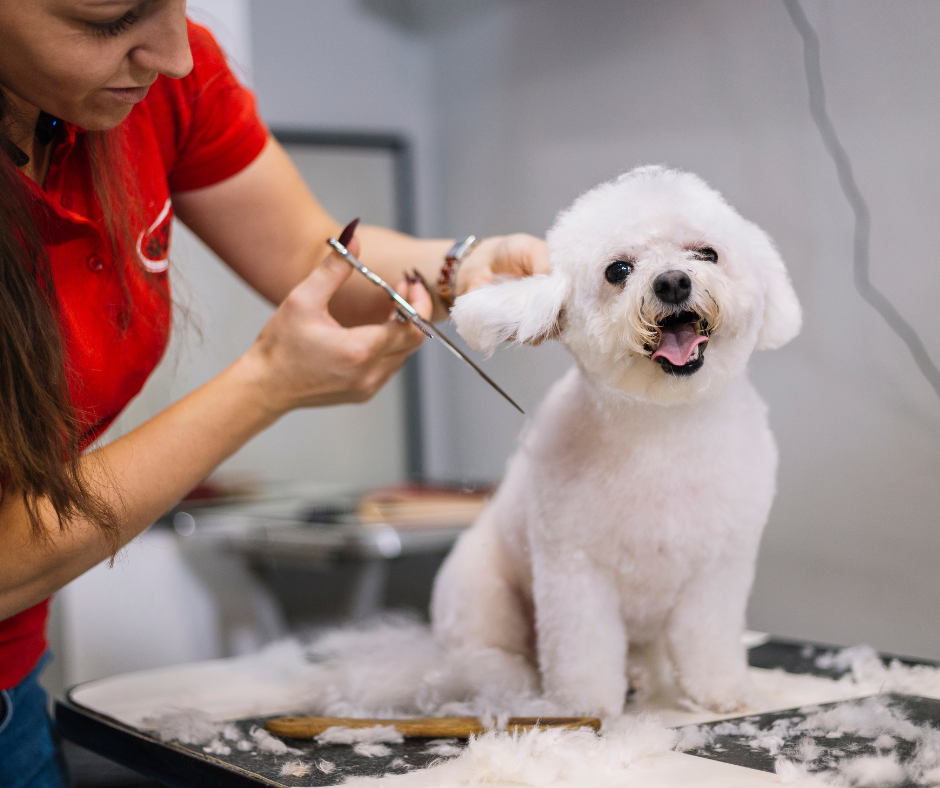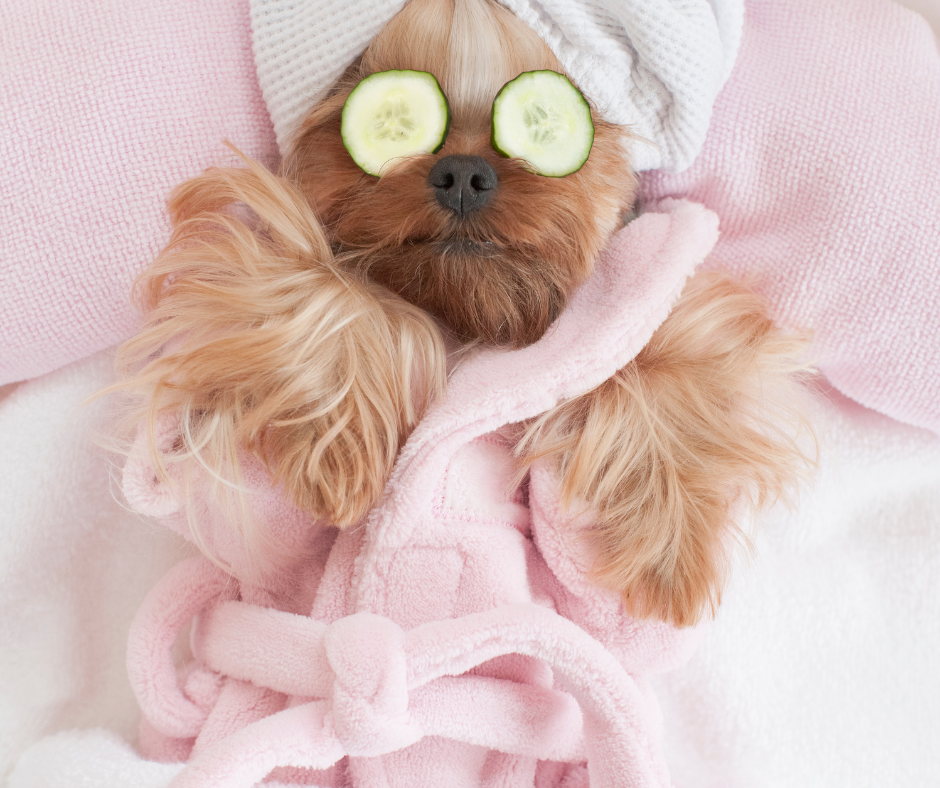Hygienic Care You Should Provide For Your Dog In Between Professional Grooming Appointments
Whether it’s short-hair, long-hair, double coat or single, every dog needs routine grooming. Although some dogs require more grooming than others (such as poodles), all dogs need some form of brushing, bathing, and nail trimming on a regular basis. In honor of International Pet Groomer Appreciation Day (November 1st), this blog will cover the fundamentals of basic dog grooming and maintenance including how often they should be groomed, what products and behaviors you should avoid, and what you can do in between grooming visits. Keep in mind this is not a “How To” guide for grooming your dog yourself, but rather a collection of tips and tricks for keeping and maintaining your dog’s coat and hygiene. Dog grooming is a serious endeavor and can be very difficult to the inexperienced which is why we typically recommend hiring a professional groomer for most of your dog’s grooming needs.
How Often Should I Have My Dog Groomed?
Although it depends on the breed, hair-length, and type of coat, most veterinarians recommend having your dog professionally groomed about once every six weeks. Once a month or once every other month is a good standard to live by. Not grooming your dog often enough can cause their fur coat to become matted and knotted which is not only uncomfortable for your dog but can cause serious health problems. A matted coat creates a lack of airflow through your dog’s fur as well as allowing the buildup of excess moisture on the skin resulting in skin irritation and infections. On the contrary, having your dog groomed too often can lead to dry skin, rashes, and even hair loss. Try and keep your dog on a routine grooming schedule either every 6 weeks or roughly every month or so to help maintain a healthy, smooth, and shiny coat.
Brushing The Coat
One of the most essential, yet commonly overlooked aspects of owning a dog is brushing. Your dog, depending on the breed, has a lot of fur which tends to build up with dirt, debris, dead hair, and unpleasant odors. Brushing your dog about one to three times a week will help get rid of those things and keep your dog’s coat clean, shiny, and healthy. Brushing your dog will also help them feel more comfortable and accustomed to being handled by a professional groomer.
Oral Hygiene
Most dog owners don’t enjoy brushing their dogs teeth and most dogs don’t enjoy having their teeth brushed. However, brushing your dog’s teeth is vitally important to their oral hygiene and avoiding stinky bad breath. Ideally you should brush your dog’s teeth once a day, but that isn’t always a convenient option for most people. Even brushing your dog’s teeth two or three times a week will make a noticeable difference. Always use toothpaste specifically made for dogs and NEVER use human toothpaste for your dogs teeth brushing needs as they often contain unsafe ingredients that can make your dogs sick. We recommend using a children’s toothbrush as they often have softer bristles and are smaller in size making it easier to get into those small crevices in your dog’s mouth. Although nothing can replace actually brushing your dog’s teeth, there are some teeth cleaning alternatives for your furry friend including doggy dental spray (an antiseptic spray that helps prevent bacteria growth and prevents plaque and tartar build-up) and dental chews (which help break up and remove plaque and tartar build-up). Brushing your dog’s teeth may not be the most exciting part of your day, but it’s a very healthy habit to get into and your dog will have a much healthier and happier smile.

Ear Cleaning
Another activity most dogs don’t enjoy, but is very important to their overall health, is ear cleaning and maintenance. Most veterinarians recommend cleaning your dog’s ears at least once a month because an excessive buildup of wax or bacteria in the ears can lead to infection. Dog breeds with heavier or longer ears that flop over the ear canal may require more frequent ear cleaning and maintenance. The best way to clean your dog’s ears is to wet a cotton ball in a doggy ear cleaning solution (either store-bought or homemade) and clean the outside area first while slowly making your way to the inner ear. Avoid using cotton swabs deep inside the ear canal to avoid damaging your dog’s ears and overall hearing. If your dog is a frequent swimmer, we recommend cleaning and drying their ears after every swim as excess water buildup in the ear canals promote bacteria and infections. Your dog’s ear health is vitally important to their overall health and well being as ear infections can be very uncomfortable for your dog and lead to worsening health issues.
Keeping Your Pet Happy!
It may not seem like much, but keeping up on these small hygiene practices will make a dramatic difference in your dog’s health, well-being, and overall happiness. As humans, good hygienic habits make us look good and feel good. The same applies to our dogs. Keeping up on your dog’s routine hygienic maintenance between grooming visits will make a profound difference in their attitude, demeanor, and overall quality of life. International Pet Groomer Appreciation Day is a good reminder of how important our professional groomers are and how valuable their services truly are for both us and our furry friends. If you need any recommendations of some excellent professional groomers, please contact us on our website and we will be happy to recommend some great local places! Leave the hard grooming work to the professionals, but stay diligent in keeping up with your dog’s routine maintenance including coat brushing, tooth brushing, ear cleaning, and other hygienic needs. Remember, a clean dog is a happy dog!


0 Comments